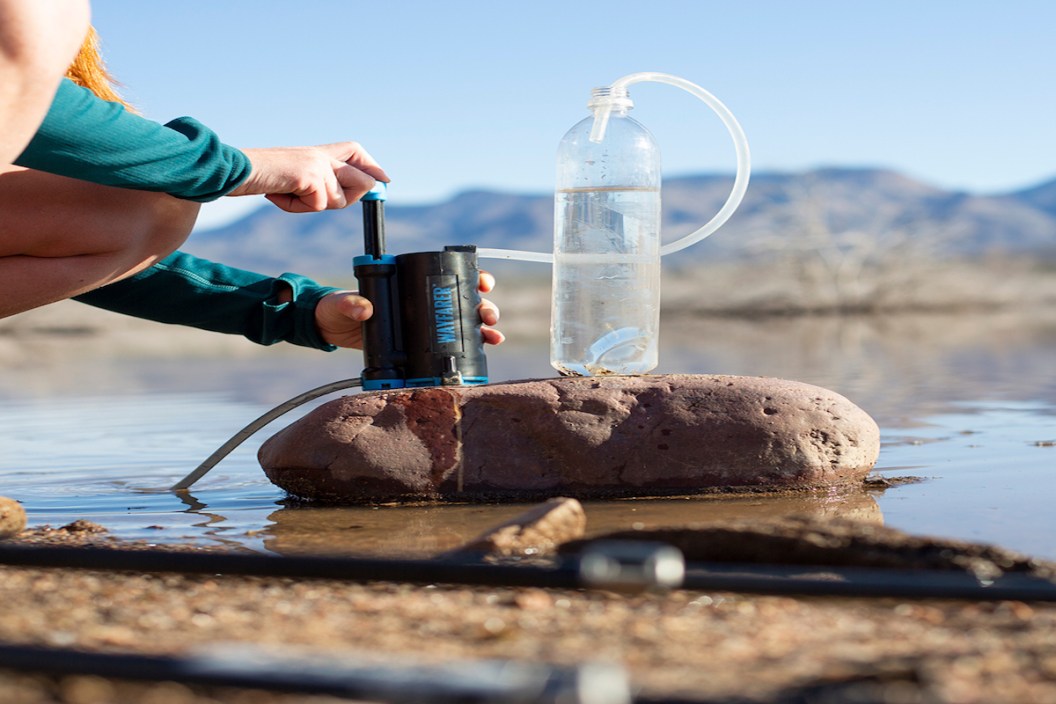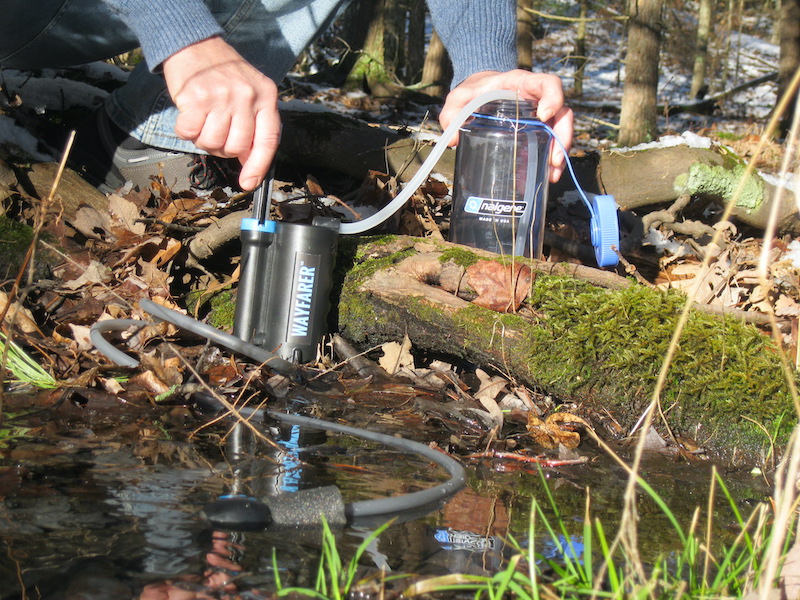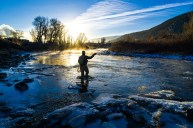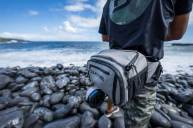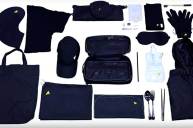Wayfarer has come up with another in a long line of safety gear for the modern hiker and outdoorsman: the Wayfarer Hiking Water Purifier. Founded in the United Kingdom in 2007, LifeSaver came into being following two of the world's worst back-to-back natural disasters: the Indian Ocean Tsunami and Hurricane Katrina.
Knowing that people around the world needed affordable ways to get clean drinking water when none was available, the Wayfarer was born. Since inventor Michael Pritchard felt compelled to address this need, he developed the first prototype right at home in his garage.
Now, with the ability to address a long-lasting solution to drinking water solutions for humanitarian, military, and our own purposes in the outdoor life sectors, LifeSaver is the new feel-good story for the upcoming outdoor season and beyond. And with one of the issues in the water purification industry being price, the Wayfarer has now addressed that.
This is not the fondly remembered candy that we ate as kids, but a new company that has put its mind to keeping hikers, hunters, fishermen, and campers safely hydrated in the event of an emergency. Add to that the fact that this product has an excellent place in your bug out bag or in your Y2K room, you may end up wanting two of them.
After sitting through the televised heinous events of the 2004 Indian Ocean tsunami, Michael Pritchard was fed up with the response for getting people safe drinking water, and just as bad was the 2005 Hurricane Katrina that pounded New Orleans. At that point, he began to tinker with filtered water systems on his own time.
As you might imagine, the LifeSaver mission revolves around making a difference in the lives of millions of people who live day by day in the effort to provide themselves with something that we take for granted. Now that they've had some great success, it goes without saying that the outdoor consumer world has taken notice as to the safety and genius of such a device.
What is the Wayfarer?
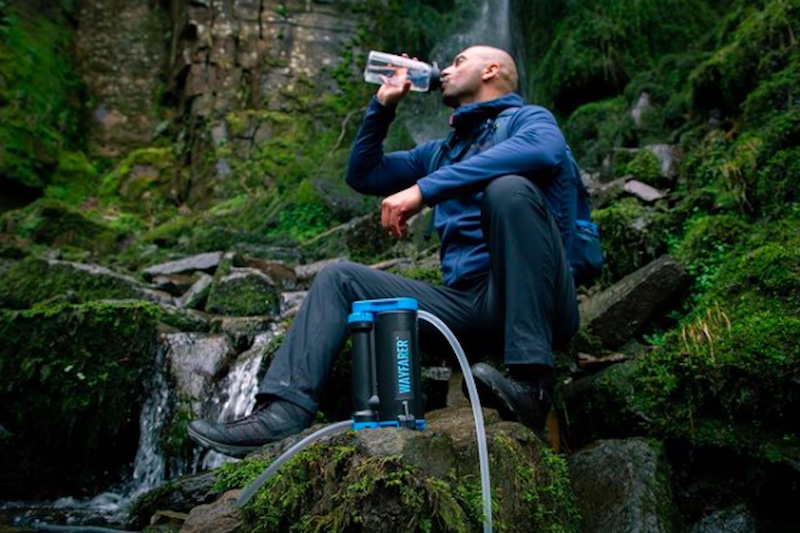
LifeSaver
Saying that, "Our LifeSaver water filters meet an adaption of NSF Protocol 231 based on recommendations of the U.S. Environmental Protection Agency (EPA) at minimum" even the Wayfarer (which is made in the UK) has its eye on the U.S. consumer to keep them safe anywhere they can find water in an emergency.
While some on-the-go water purifiers need to be used with a straw by getting your face right in a mud puddle, the Wayfarer takes all that out of the equation with a pump system that keeps the user on their feet. The two-stage hollow fiber filter membranes purify up to 1,320 gallons of water, or about 5,000 liters.
Included in the Wayfarer is their "FailSafe Technology" where once the membranes are full from filtering, water can no longer pass through, adding a next-level measure of safety for all users. It even comes with a handy travel pouch.
Using the Wayfarer
I've personally owned and used multiple emergency water purification or filter systems, and with today's technology, you pretty much can't go wrong. With that in mind, this is the first one that I've had in my hands that allowed me to relax a bit, and take control of the action by simply setting it up and pumping clean water into a bottle or some other reservoir to drink with much more ease.
It's practically ready to go right out of the box and the instructions are very straightforward and easy to comprehend. It comes equipped with two hoses- one out hose to collect the water in another container, and a "scavenger" hose which is placed into the water source. The issues that I had with this unit are the lack of instructions for changing the filter out, (you need to view the online instruction manual) and the fact that it doesn't come with an extra cartridge.
The scavenger hose has a rubberized end and a small weight applied to it to keep it under the water. The end cap keeps any larger solids like pebbles or larger vegetation from entering thereby keeping the membranes from prematurely being blocked. It needs to be said that this is a pressure vessel, meaning that once primed, (and it needs to be primed) you should only have to pump it about four times to get the water moving and then stop pumping it.
The upside to using the Wayfarer is that the user can slow down and collect the water needed while keeping an eye on its physical looks entering the container. Conversely, with many emergency water filters the user only needs to fill the container and begin drinking immediately.
My problem with that is you have only the filter between you and the water, instantly after filling it, and as we all know, seeing what it looks like can mean the difference between drinking water that appears to have an issue. Sure, pumping water with the Wayfarer may give you the same result, but you will have the time to inspect what you are about to drink first.
It is a little more to carry than some may like due to its size, but it sure isn't heavy, has its own cary bag, and doesn't really take up that much room in your day bag. You will need a second container to fill, (another thing to carry) and that is not provided.
I tried the Wayfarer in puddles, one stream, and the local reservoir and it worked to perfection. Any body of water can look safe to drink, but we all know that is not usually true. It is simple to pump and takes almost no time to fill your bottle, canister or even a larger receptacle with ease.
For camping, many folks have both potable and non-potable water sources available to them at times, but with this system, that takes all of the concern out of the equation. You could even fill a pail with ease at a campground if you so choose, and that's something that the others cannot do.
Please check out my book "The Hunter's Way" from HarperCollins. Be sure to follow my webpage, or on Facebook and YouTube.
